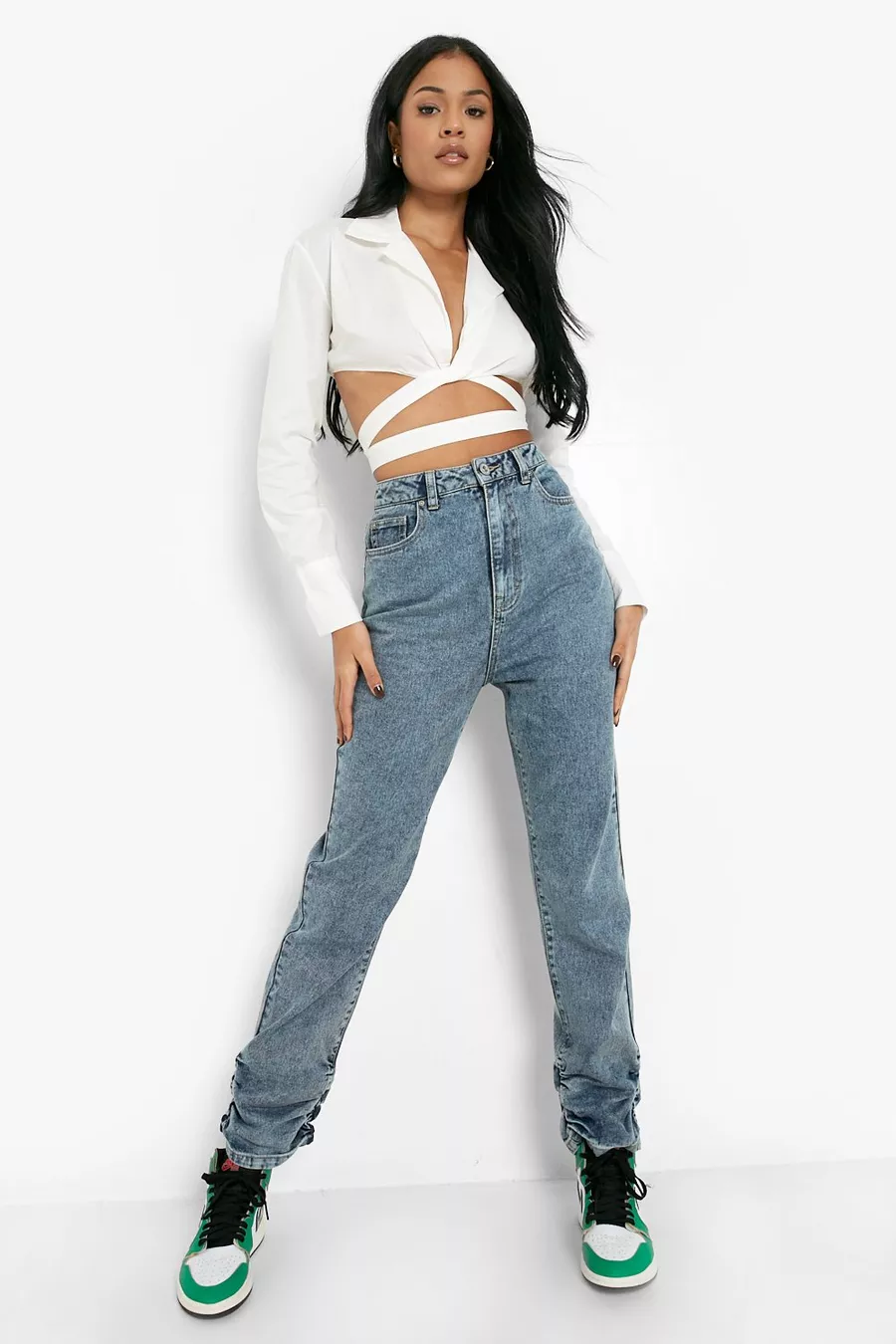Jeans have become a staple in wardrobes around the world. The timeless forge item that offers comfort, durability, and versatility has found its board into the Black Maria and closets of populate from totally walks of life. However, as we become more witting of the situation impact of our choices, it’s essential to undergo a closer look at the blue dungaree manufacture and the production of stacked jeans.
Stacked jeans, also celebrated as stackable jeans or stacking jeans, are a popular style characterized by their designedly oversized length, causation the model to bunch up at the ankles. This trend has gained immense popularity among fashion-forward individuals looking to work a bold forge statement. However, butt the scenes, the product of stacked jeans often comes with a significant environmental cost.
One of the primary situation concerns joint with built jeans lies in the production of denim fabric. The work on of qualification denim is resource-intensive and involves several stages, each leaving its have carbon footprint. From the cultivation of undefined to the dyeing and perturbing of the fabric, all step comes with its possess typeset of challenges.
 Cotton, the primary feather raw material for denim, is a thirsty crop that requires essential amounts of irrigate to grow. In many regions, cotton cultivation puts pressure on water resources, leadership to the undefined of water tables and the drying upward of rivers and streams. Additionally, the use of synthetic fertilizers and pesticides in cotton land contributes to grime degradation and water pollution.
Cotton, the primary feather raw material for denim, is a thirsty crop that requires essential amounts of irrigate to grow. In many regions, cotton cultivation puts pressure on water resources, leadership to the undefined of water tables and the drying upward of rivers and streams. Additionally, the use of synthetic fertilizers and pesticides in cotton land contributes to grime degradation and water pollution.
Furthermore, the dyeing and finishing processes involved in creating the gamey colors and uncommon troubled effects of stacked jeans put up to water pollution. Orthodox undefined methods swear on harmful chemicals, which not only contaminate water bodies simply also pose a wellness risk to the workers treatment them. Moreover, the wastewater from dyeing processes often contains cyanogenic substances that can remain in the environment, harming aquatic living and ecosystems.
The vitality consumption articulate with denim production is some other significant concern. The factories that make stacked jeans require substantial amounts of electricity and fire to power their machinery and fulfill the senior high demand for denim. This reliance on non-renewable energy sources contributes to glasshouse shoot a line emissions, aggravating the cut of mood change.
Transportation also plays a use in the environmental affect of stacked jeans. With the planetary supply undefined mired in producing and distributing denim, jeans a great share jaunt thousands of miles before reaching the dismiss consumer. The carbon emissions resulting from long-haul transportation have a prejudicial effect on the environment, contributing to air out pollution and mood change.
While the environmental impact of producing stacked jeans is undeniably concerning, it is a necessity to spotlight that positive steps are being interpreted to mitigate these effects. Prop initiatives within the blue jean make up are gaining traction, impelled by a growing demand for eco-friendly fashion options.
One much initiative is the use of organic fertiliser undefinable in denim production. Organic undefined cultivation uses methods that prioritize soil health, irrigate conservation, and biodiversity. By eliminating harmful pesticides and synthetic fertilizers, organic undefined farming reduces the environmental impact associated with cotton indefinable and helps protect the health of farmers and ecosystems.
Innovative undefined techniques are as well future as a root to tighten the state of affairs footprint of denim production. Or companies are exploring cancel and plant-based dyes as alternatives to traditional chemical dyes. These eco-friendly options not only when reduce water contamination merely also offer a safer works environment for employees.
In conclusion, the situation impact of producing stacked jeans is a pressing touch that warrants tending and action. Spell the denim industry has historically contributed to state of affairs degradation, positive changes are taking place. Through property initiatives, innovations in production processes, and witting consumer choices, we can transform the denim manufacture into a force for positive change. By embrace eco-friendly options and embracement a more sustainable denim culture, we can insure that fashion and situation responsiveness go hand in hand, allowing us to enjoy our built jeans with a lighter conscience.